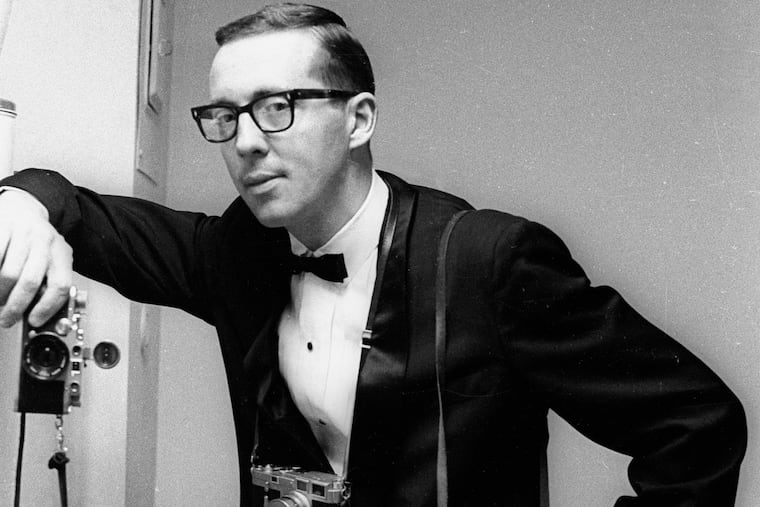James A. Drake, award-winning Sports Illustrated photographer, dies at 89
He was at most of the big sports event in the 1960s, '70s, and '80s, and his photos graced 79 Sports Illustrated covers.

James A. Drake, 89, a longtime award-winning photographer for Sports Illustrated magazine, who trotted the globe and produced some of his era’s most indelible images, died Monday, Jan. 10, of lung cancer at his home in Philadelphia.
Starting in 1959, Mr. Drake spent nearly four decades publishing some of the most iconic sports photographs ever taken. Sports Illustrated devoted 79 of its famous covers to his pictures, and his list of subjects is a who’s who of the sports scene throughout the 1960s, ’70s, ’80s, and ’90s.
Assigned to cover some of the world’s most important games, matches, meets, fights, tournaments, and races, Mr. Drake photographed superstars in practically every sport. Joe Namath, Nadia Comaneci, Bobby Orr, Arnold Palmer, Richard Petty, Muhammad Ali, Hank Aaron, Mickey Mantle, Larry Bird, Joe Paterno, Mike Tyson, Michael Jordan, and countless others grace his portfolio.
His action photo of Palmer at the 1964 U.S. Open was even used in 2020 on a U.S. postage stamp.
A lifelong Philadelphian and die-hard fan of the Eagles, Phillies, and 76ers, Mr. Drake said some of his favorite photos were of Reggie White, Jerome Brown, Randall Cunningham, Mike Schmidt, Pete Rose, Wilt Chamberlain, Maurice Cheeks, and Julius Erving. Mr. Drake also created images of Presidents John F. Kennedy, Gerald Ford, and Ronald Reagan; Vice President Hubert Humphrey; and actor Steve McQueen.
Mr. Drake was in Augusta, Ga., in 1963 when Jack Nicklaus won his first Masters tournament with a dramatic 3-foot putt on the final hole. He was at Madison Square Garden in 1971 when Joe Frazier beat Ali in the first of their three famous fights. And he was at the 1972 Summer Olympics in Munich, Germany, when Palestinian terrorists took nine Israelis hostage.
If the event drew worldwide attention, it also drew Mr. Drake. “Jim was a gentleman in the truest sense of the word,” said fellow photographer Neil Leifer, who, along with Mr. Drake and Walter Iooss Jr., anchored the Sports Illustrated photo department for years. “I considered Jim the best photographer among the three of us during that era, and in my opinion he was the best golf photographer ever.”
Closer to home, Mr. Drake took photos of the Mummers on New Year’s Day, exhausted rowers on the Schuylkill, and the Philadelphia landscape from all angles. He also contributed photographs to the 1968 book Philadelphia: The Intimate City.
In addition to Sports Illustrated, Mr. Drake’s photos appeared in Life magazine, the Saturday Evening Post, and other publications. He left Sports Illustrated in 1980 to become picture editor at Inside Sports magazine. He returned to Sports Illustrated in 1986 and stayed until 1990, when he left to freelance for ABC Sports. He retired in 1994.
Mr. Drake won several awards for his work, including the 2010 Lucie Award from the Los Angeles-based Lucie Foundation for “achievement in sports photography.” In a bit of irony even he acknowledged to PennLive.com reporter David Jones in 2021, Mr. Drake said: “I don’t like my picture taken.”
Former Sports Illustrated publisher Donald J. Barr, in describing a 1986 photo essay on baseball, praised Mr. Drake for seeking a “subtler means of expressing the pressures and frustrations” of the players. One of his favorite photos in the display, Mr. Drake said then, was of an old pitcher trudging off the field toward the locker room, “so expressive of the old-timer, yanked out, disappointed, bent and fatigued.”
Born April 6, 1932, and raised in North Philadelphia, Mr. Drake was a star sprinter and hurdler in high school at William Penn Charter School. He earned a bachelor’s degree in English and journalism in 1955 from the University of Pennsylvania, spent two years in the Army, and honed his eye at the Trentonian newspaper in Trenton and the Bucks County Traveler magazine.
He met librarian Jean Casten in 1959 on assignment in Philadelphia. They married, had sons Chris and Patrick, and lived in Philadelphia. She died in 2016.
When he wasn’t behind the camera, Mr. Drake liked to paint in watercolors and pastels, watch old Humphrey Bogart movies, camp, hike, and spend summer days at Wildwood Crest.
Routinely a late sleeper due to his schedule, he would nevertheless make his way to the living room in time for Eagles games on Sundays, often exclaiming to his sons, “These early games are murder.”
“He had a great sense of humor,” said his son Patrick.
“He was the kindest, most gentle person,” said his son Chris. “He always told us that he did what he always dreamed of doing.”
In addition to his sons, Mr. Drake is survived by three grandchildren and other relatives.
Services were Saturday, Jan. 15.
Donations in his name may be made to Old First Reformed Church, 151 N. Fourth St., Philadelphia, Pa. 19106.